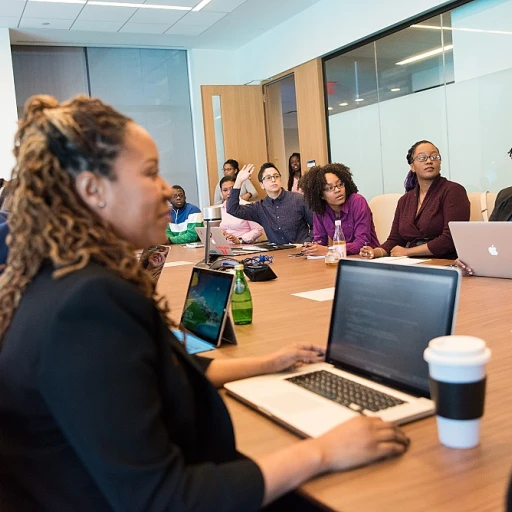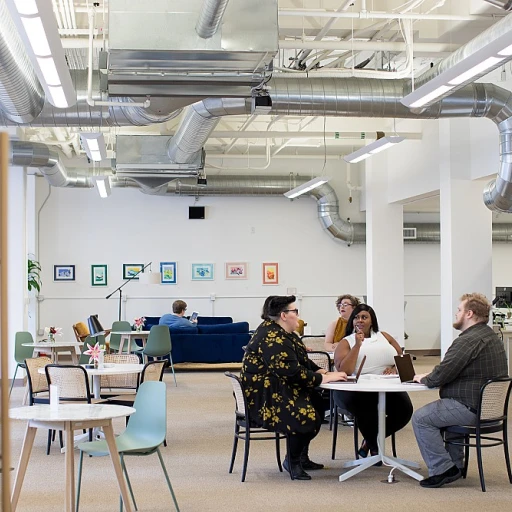
The Rise of Remote Work in Technical Fields
Embracing Flexibility: A New Era for Technical Workers
Remote work has surged to the forefront in technical fields, ushering in a transformative era for the workplace. This trend, empowered by advances in digital technologies and infrastructure, has reshaped how companies approach work. By leveraging a digital workplace, technical workers are finding newfound freedom and flexibility, changing the dynamics of employee experience and productivity. One notable shift is the greater reliance on digital technologies to facilitate communication and collaboration. Tools like video conferencing and project management systems allow team members to stay connected regardless of their physical location, ensuring seamless technical communication and real-time data sharing. This connectivity not only aids in maintaining technical skills but also in enhancing workplace technology to keep pace with the ever-evolving demands of the industry. The workplace landscape is also experiencing diversification in talent distribution. Geographic barriers that once constrained where companies could find technical employees are diminishing. As a result, businesses are tapping into a broader pool of talent and acquiring diverse skill sets that contribute to more innovative solutions. While benefits such as reduced commutes and flexible schedules contribute positively, challenges do arise. Companies and employees alike must navigate concerns such as data privacy and ensuring a conducive environment for remote work. Effective management systems are critical in supporting technical workers, fostering a sense of inclusion, and managing productivity metrics that align with company goals. Ultimately, the technological advancements driving remote work in technical fields also call for a reevaluation of leadership strategies, focusing on enhancing team cooperation and crafting a conducive digital workplace. For a glimpse into how these changes are shaping future work environments, explore more about future work environments.Automation and AI: Allies or Adversaries?
Harnessing Automation for a Strategic Advantage
Automation and Artificial Intelligence (AI) are reshaping the technical workplace in profound ways. As digital technologies continue to evolve, companies are faced with both opportunities and challenges. The integration of automation can streamline processes, enhance productivity, and reduce operational costs. However, it also brings concerns about job displacement and workforce adjustments.
AI and automation should be seen as tools to complement human skills rather than replace them. This perspective enables employees and management teams to focus on leveraging technology to tackle repetitive tasks and allow technical workers to channel their expertise into more value-driven activities. When deployed thoughtfully, workplace technologies can enhance decision-making and enable real-time communication.
AI and People: Shaping a Balanced Technological Ecosystem
The key is finding the balance between AI-driven efficiencies and human-centric roles. Companies must foster a culture that encourages continuous learning and development of technical skills. By investing in employee experience and education in digital technologies, businesses ensure their workforce remains adaptable and prepared for future challenges.
It's essential to address the data privacy concerns that arise with increased automation and AI use. Implementing robust management systems can help protect sensitive information, ensuring the safeguarding of workplace data.
For a deeper dive into how automation and AI are shaping the workplaces of the future, check out this exploration of intelligent workplaces.
The Importance of Continuous Learning
Adaptation and Learning: The New Norm
In the evolving landscape of the technical workplace, continuous learning has become crucial. The integration of digital technologies is reshaping the way technical teams operate, making it imperative for employees to keep pace with the latest advancements. This requirement extends beyond technical skills; understanding workplace technologies and effective technical communication is equally essential. As technology progresses, the need for ongoing education is undeniable. Organizations are increasingly recognizing this and are investing in upskilling their workforce. This investment not only aids in improving employee experience but also enhances overall workplace efficiency. By doing so, companies can ensure that their teams stay agile and efficient, capable of responding to real time demands in the digital workplace. Moreover, technology workplace developments such as automation and AI trends necessitate continuous learning. While these technologies offer significant benefits, they also introduce complexities that require a nuanced understanding. Staying informed about these developments can help mitigate potential threats posed by innovative digital tools. For employees, the challenge lies in balancing current job responsibilities with learning new skills. Management systems need to provide adequate support for this dual focus, offering resources that facilitate a seamless transition between tasks and learning sessions. In companies prioritizing continuous learning, a culture of curiosity and growth is fostered across all levels, from individual team members to organizational leaders. Consequently, the organizations that promote a learning-forward approach are those where the technical workforce thrives. The emphasis on education and skill enhancement not only benefits the employee but also bolsters productivity, leading to sustained success in an ever-changing technical workspace. If you're eager to delve further into how data platforms and analytics play a role in shaping the technical workforce, consider exploring when we will experience fully immersive VR as an upcoming dimension of workplace technology.Diversity and Inclusion in Tech
Embracing Diversity and Inclusion in the Tech World
In our rapidly changing technological landscape, the emphasis on diversity and inclusion is more significant than ever. As organizations aim to create dynamic and responsive environments, they are realizing the profound impact that a diverse workforce can bring to the table. This isn't just about filling quotas or meeting legal requirements; it's about cultivating a richer pool of ideas and experiences that drive innovation. However, achieving genuine inclusivity in the technology workplace often comes with its set of challenges. It's not merely a matter of hiring more women, people of different ethnic backgrounds, or individuals with varying abilities; it involves creating a culture that welcomes and respects differences. Moreover, the benefits of an inclusive culture extend beyond ethical considerations. Studies have shown that companies that prioritize diversity and inclusion often outperform those that don't, as they can better understand and tap into a wider array of consumer needs.Technologies Supporting Diversity and Inclusion
Digital technologies can serve as valuable tools in promoting a more inclusive work environment. By leveraging data and management systems, employers can gain insights into the make-up of their workforce and identify potential areas for improvement. For instance, analytics can help ensure that work opportunities and promotions are equitably distributed among all employees, rather than favoring a particular group. Moreover, workplace technology, such as real-time communication platforms and social media, can foster inclusivity by allowing team members from different locations and backgrounds to engage and collaborate effectively. These platforms can help in breaking down cultural as well as geographical barriers, making team dynamics more cohesive.Creating An Inclusive Culture
The responsibility of cultivating an inclusive environment falls significantly on the shoulders of leadership. By promoting continuous learning about diversity issues and setting the right examples, leaders can play a critical role in shaping company culture. Technical workers, management, and employees of all levels need to be engaged in this process to ensure everyone has the right skills and mindset to support diversity initiatives. Sensitivity training sessions, open dialogue forums, and diversity task forces can also be instrumental strategies here. By incorporating such tools into their management systems, organizations can demonstrate the value they place on each individual in the technical team, thereby improving the overall employee experience. Ultimately, in a digital workplace driven by innovation and progress, fostering a culture of diversity and inclusion is not just an option; it is essential for a thriving and competitive company.Balancing Work-Life Integration
Achieving the Right Work-Life Blend
The technical workplace has undergone significant transformation in recent years, driven partly by the rise of remote work and rapid advancements in digital technologies. Employees across technical fields are constantly adapting to new demands that often blur the lines between work and personal life. Striking a balance becomes critical for both personal well-being and professional effectiveness. Achieving work-life integration is not just about managing time but also about enhancing employee experience and well-being in the workspace. This balance can be particularly challenging as many roles now require continuous availability due to digital technologies enabling real-time communication and management systems. Here's how organizations and their employees can approach this balance:- Flexible Work Arrangements: Embracing a flexible schedule can be a game-changer. Offering options like flexible hours or remote work helps team members manage their responsibilities more effectively, leading to improved satisfaction and productivity.
- Leveraging Digital Tools: The proliferation of digital workplace technologies offers tools designed to streamline tasks and reduce the time spent on routine activities. Automation can contribute significantly, freeing up time for technical workers to focus on more valuable tasks.
- Encouraging Regular Breaks and Disconnect: Promoting a culture where regularly stepping away from work is valued can help prevent burnout. Companies should encourage employees to take breaks and disconnect from work devices after hours, which is crucial even in a digitally-driven workplace.
- Inclusive Workplace Cultures: Fostering an environment where diversity and inclusion are prioritized can lead to greater work-life integration. When employees feel respected and included, they are more likely to contribute meaningfully without the added stress of navigating workplace politics.












